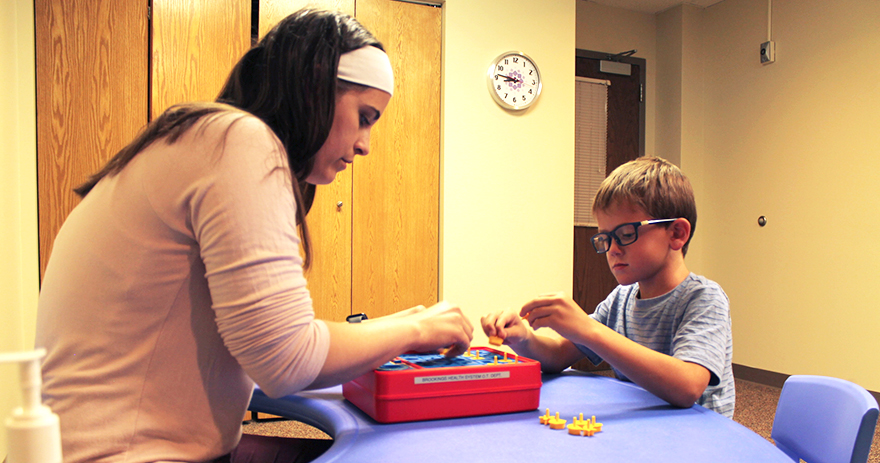What is Occupational Therapy?
- Spring 2023

Occupational therapy (OT) is a healthcare profession that focuses on helping individuals with disabilities or illnesses achieve their goals, enhance their performance, and increase their independence in daily activities, also known as occupations. These occupations may include self-care tasks, such as dressing and grooming, household management, leisure and play, work, and school-related activities. Brookings Health System’s occupational therapists work with people of all ages, from infants to seniors, in several settings including the hospital, home health and outpatient.
An occupation, in OT terms, is any meaningful activity that individuals engage in on a regular basis that supports their physical, mental, and emotional well-being. Occupations vary depending on an individual's age, culture, and social roles. For example, self-care occupations for a child may include brushing teeth, getting dressed, and eating, while for an adult, they may include cooking, cleaning, and driving. Work-related occupations may include job-related tasks such as typing or lifting heavy objects, while leisure and play occupations may include hobbies, sports, or social activities.
Occupational therapy differs from physical therapy (PT) in that OT focuses on improving an individual's ability to perform daily activities, while PT focuses on improving an individual's physical abilities, such as strength, range of motion, and balance. Physical therapists work to address impairments and functional limitations in movement and mobility caused by injuries or diseases of the musculoskeletal, neurological, or cardiopulmonary systems. Occupational therapists, on the other hand, work with clients to develop the skills and strategies needed to perform daily activities that are important to them. This may include addressing physical, cognitive, or emotional impairments that affect their ability to participate in meaningful occupations.
OT helps people overcome deficits in a variety of ways. First, occupational therapists conduct a thorough evaluation to identify the patient’s strengths, challenges, and goals related to daily activities. Based on the evaluation results, they develop an individualized treatment plan that includes interventions to address the specific areas of difficulty. These interventions may include teaching new strategies or techniques, modifying the environment or activity, or providing adaptive equipment to support performance. For example, an occupational therapist may teach an individual with Parkinson’s how to dress, shower and groom themselves. Hand therapy may include custom splints or bracing to immobilize an area and improve healing. OTs may also recommend modifications to the home environment, such as installing grab bars or pressure mapping furniture to find the right cushion type, to support the patient’s independence, safety and health.
Brookings Health’s occupational therapists also help patients improve their cognitive and emotional well-being to enhance their performance in daily activities. For example, an occupational therapist may work with a patient on vision therapy which can help them with memory, reading and learning as well as well as the ability of the eyes to work together.
By providing individualized interventions and support, occupational therapists help patients overcome deficits and achieve greater independence and quality of life. Learn more about services at brookingshealth.org/OT.

